Lower River Group - east side of Firehole River - page 2
West of Azure Spring, on the way back to the river, several features perforate the ground, among them Blizzard Geyser (UNNG-RVG-4, LRNN122 in the RCN database) and the hot spring LRNN121.
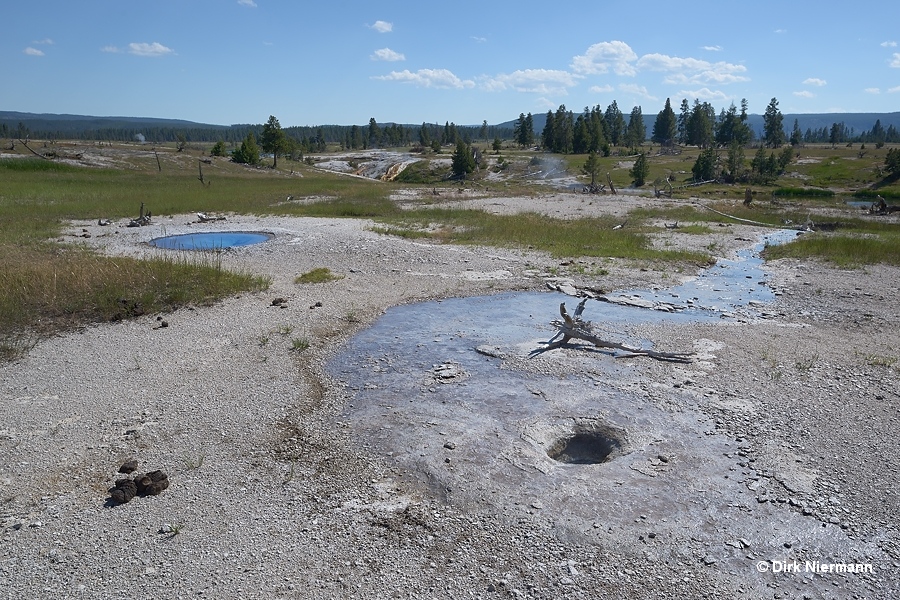
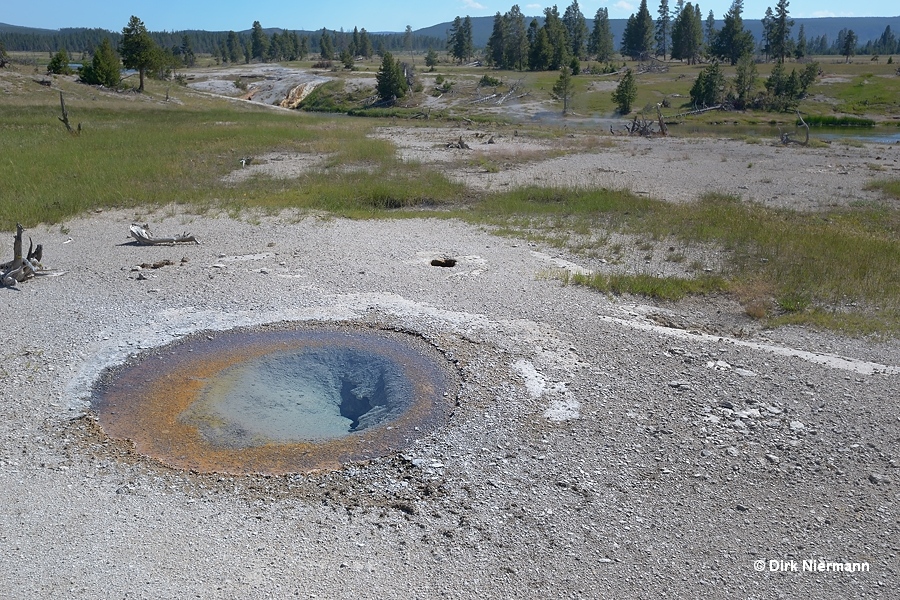
Back at the river, Cavern Spring and Bath Spring occupy the bank. Just as little as Bath Spring, featuring a temperature of 92 °C (197 °F), can be recommended for bathing, the dangers of Cavern Spring should be underestimated. In August 2000 three park employees, two 18-year-old boys and a 20-year-old girl, tried to jump hand in hand over Cavern Spring after a swim at night in Yellowstone River. However, in the twilight they misjudged both the spring's true nature and dimensions from the direction they were approaching. All three landed on the opposite side on the very edge of Cavern Spring, which gave way and precipitated them into the 81 °C (178 °F) hot water. While the boys survived badly scalded, the girl died from her severe burns the next day. The whole scary story in the minutest detail can be found in the book Death in Yellowstone by Lee H. Whittlesey.
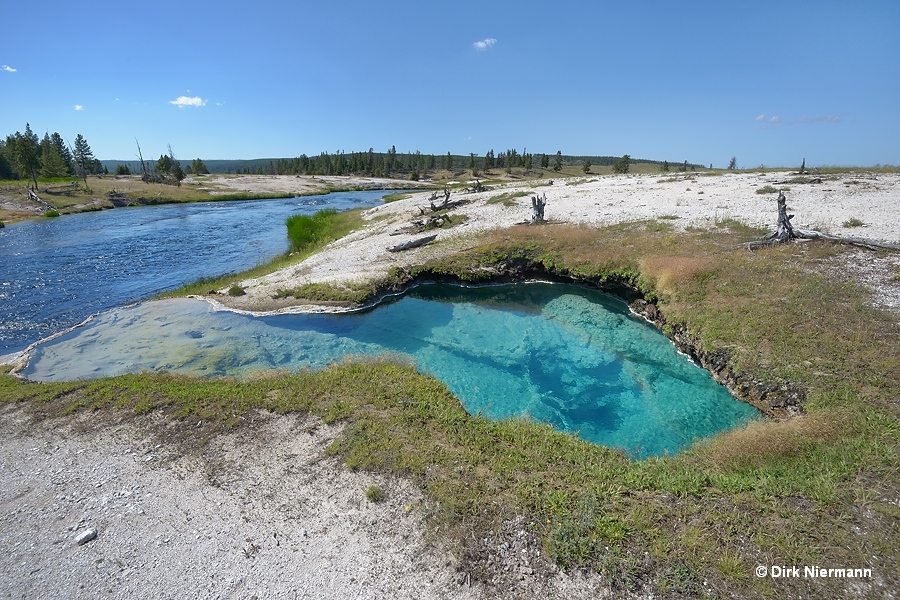
Toward the river a sinter dam sets the water level of Cavern Spring.
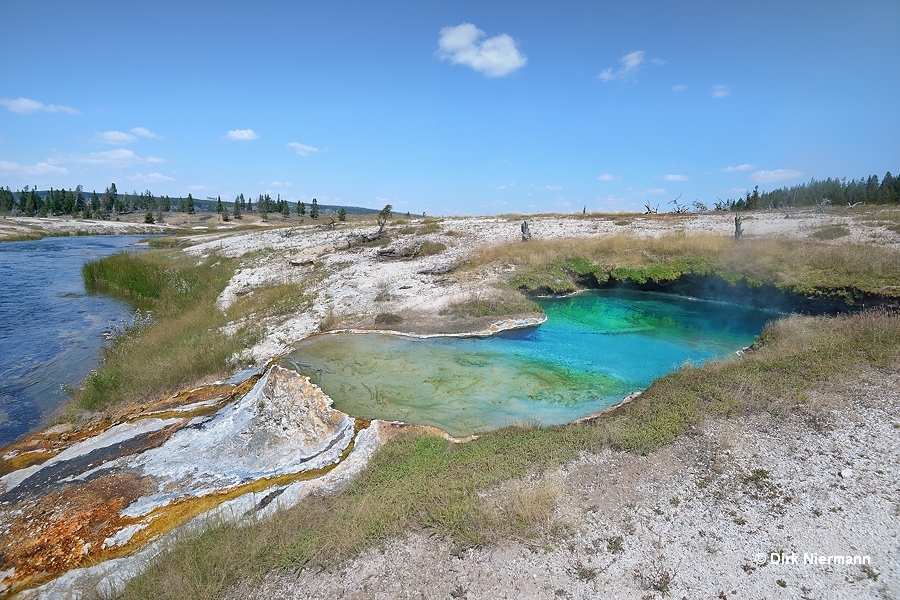
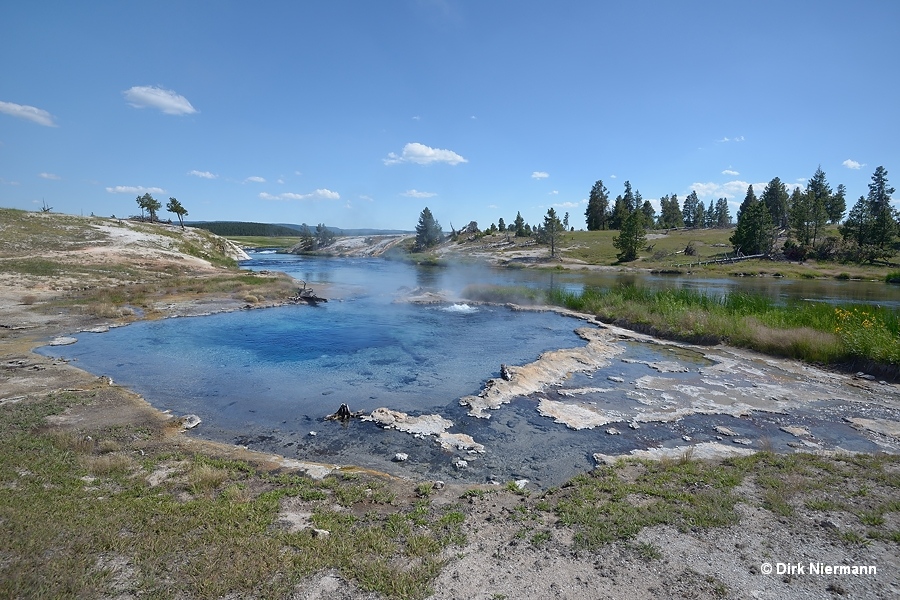
The next notable feature farther upstream is Perch Spring at a very pictorial position on top of a sinter mound above the river. Across the river you can spot the little steam plume of Mound Geyser.
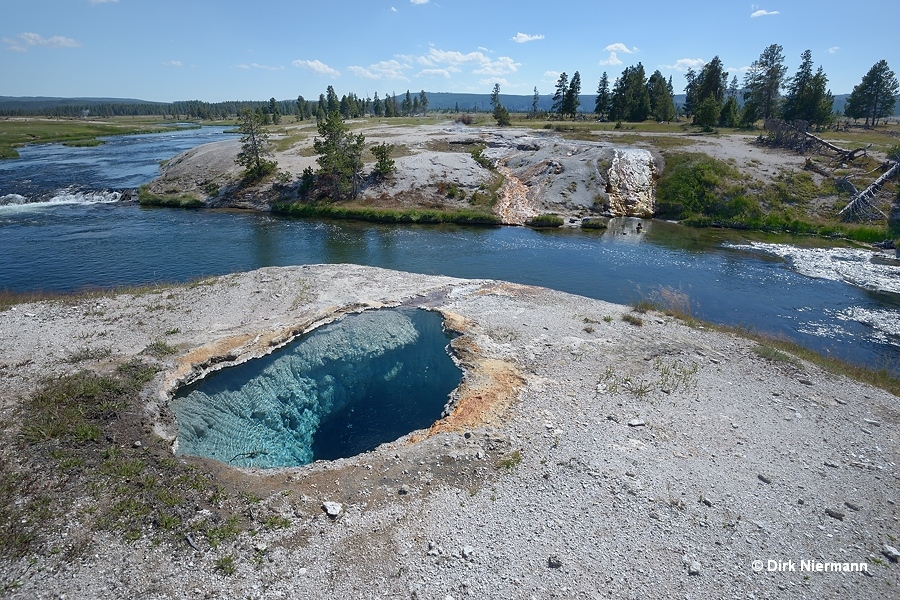
East of Perch another named pool, Diadem Spring, shows up. Back in the 1970s Diadem was known for massive, periodical overflows. But then the spring cooled down and activity declined.
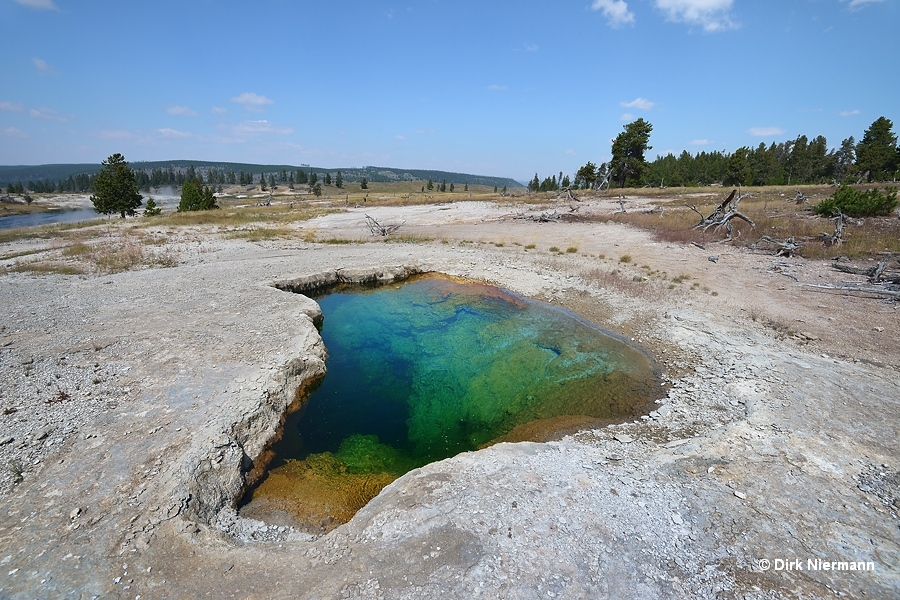
The steep river bank continues south of Perch Spring and is also home of Cone Spring and, a little bit upstream, Horn Spring. From time to time some tiny splashes from their vents on top can be observed.
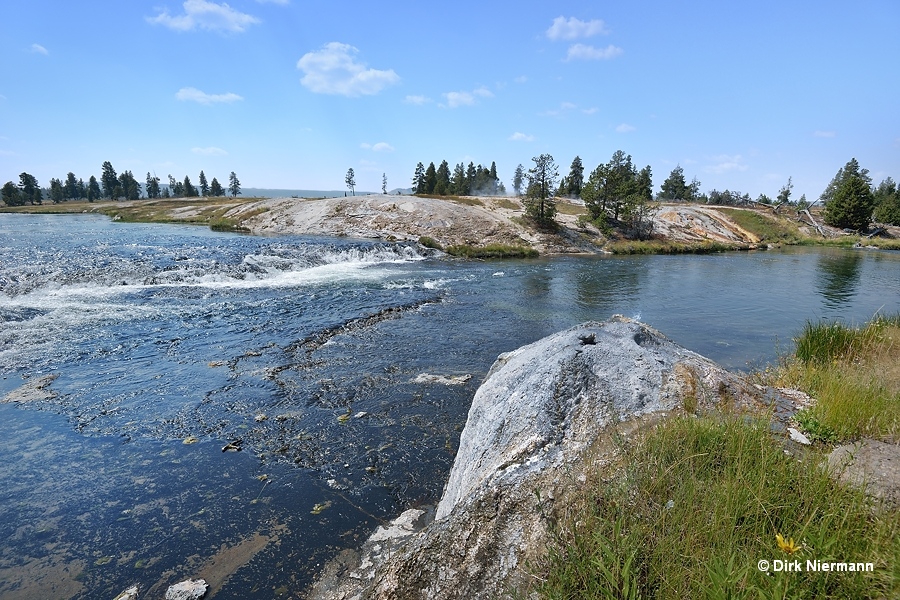
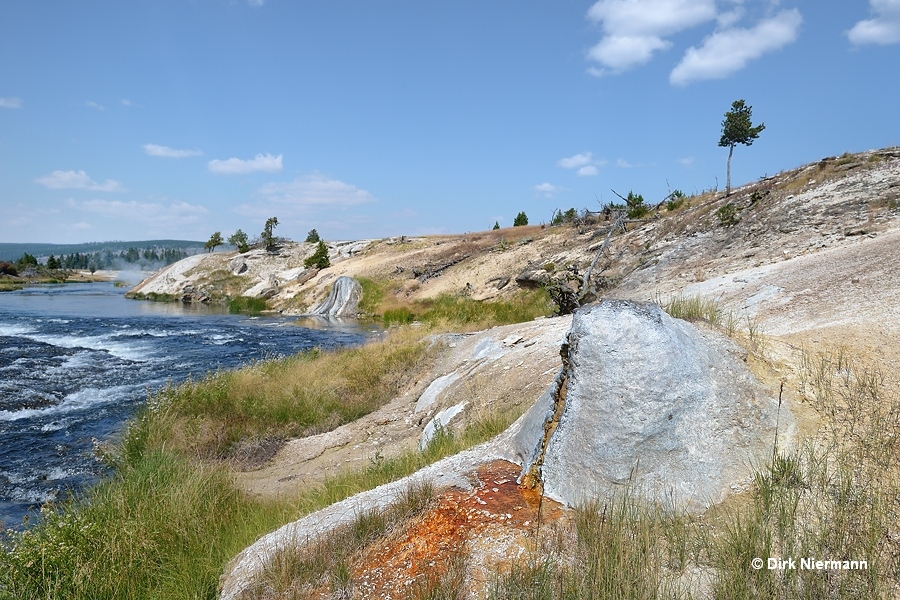
Pocket Basin Geyser lies close to the southern boundary of the Lower River Group. As a cyclic geyser it undergoes several periods of overflowing and draining, before the eruption occurs. Intervals are covering a broad range, though, from less than an hour to several days. The eruption may reach up to 3 m (15 feet) height.
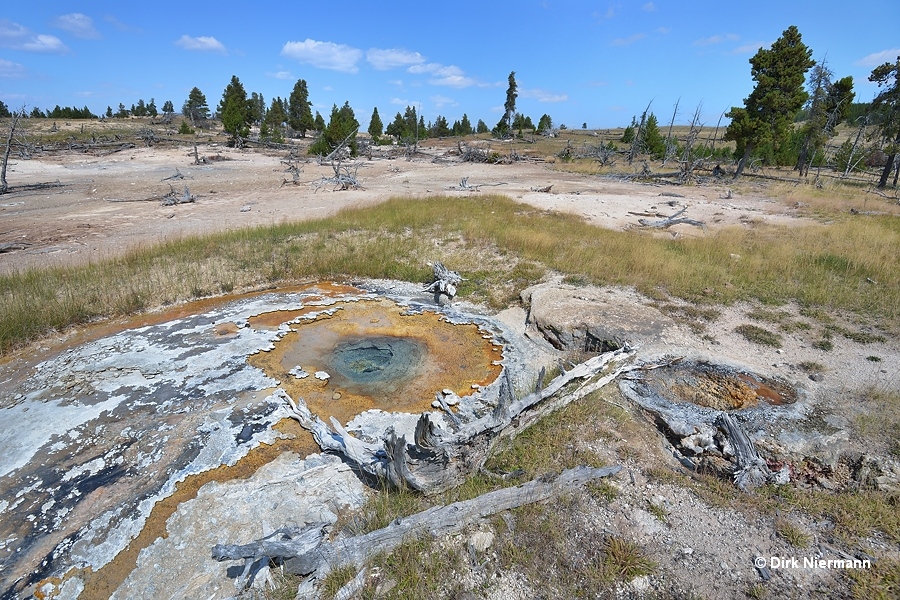
If you proceed farther south, you reach after approximately 250 m (275 yards) the upper section of the River Group, comprising e.g. Armored Spring and Fortress Geyser.